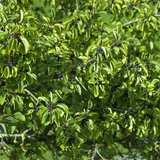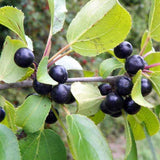Bare Root Common Buckthorn Bundle 60/90cm x 50
(Rhamnus Cathartica)
Common Buckthorn is a native, thorny species with brown bark, prickly branches, and black-brown coloured leaf buds.̴Ì?is slow growing, but great for any wet sites!
Common Buckthorn is a native, thorny species with brown bark, prickly branches, and black-brown coloured leaf buds.̴Ì?is slow growing, but great for any wet sites!







